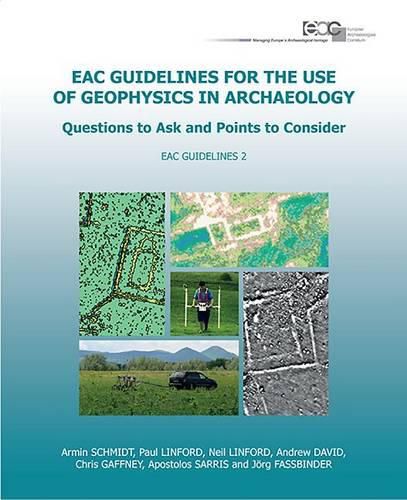Readings Newsletter
Become a Readings Member to make your shopping experience even easier.
Sign in or sign up for free!
You’re not far away from qualifying for FREE standard shipping within Australia
You’ve qualified for FREE standard shipping within Australia
The cart is loading…






The aim of the guidelines of the European Archaeological Council (EAC) is to provide an overview of the issues to be considered when undertaking or commissioning geophysical survey in archaeology. As every project differs in its requirements and variations in geological and environmental conditions leading to different geophysical responses, there is no single ‘best’ survey technique or methodology. This guide, in its European approach, highlights the various questions to be asked before a survey is undertaken. It does not provide recipe-book advice on how to do a geophysical survey or a tick list of which technique is suitable under what conditions as there is no formalized standard for the conduct of geophysical survey in archaeology. A variety of geophysical techniques is available and an archaeological geophysicist will choose a particular methodology for collecting data with any of these techniques. The choices will depend on the archaeological questions being asked (whether broad, like are there any archaeological features in this planned road corridor? or detailed as in is this wall foundation one brick wide or two? ).
The following booklet discusses the issues for consideration when selecting geophysical techniques and methodologies, but do not specify specific requirements as these will vary according to context.
$9.00 standard shipping within Australia
FREE standard shipping within Australia for orders over $100.00
Express & International shipping calculated at checkout
The aim of the guidelines of the European Archaeological Council (EAC) is to provide an overview of the issues to be considered when undertaking or commissioning geophysical survey in archaeology. As every project differs in its requirements and variations in geological and environmental conditions leading to different geophysical responses, there is no single ‘best’ survey technique or methodology. This guide, in its European approach, highlights the various questions to be asked before a survey is undertaken. It does not provide recipe-book advice on how to do a geophysical survey or a tick list of which technique is suitable under what conditions as there is no formalized standard for the conduct of geophysical survey in archaeology. A variety of geophysical techniques is available and an archaeological geophysicist will choose a particular methodology for collecting data with any of these techniques. The choices will depend on the archaeological questions being asked (whether broad, like are there any archaeological features in this planned road corridor? or detailed as in is this wall foundation one brick wide or two? ).
The following booklet discusses the issues for consideration when selecting geophysical techniques and methodologies, but do not specify specific requirements as these will vary according to context.